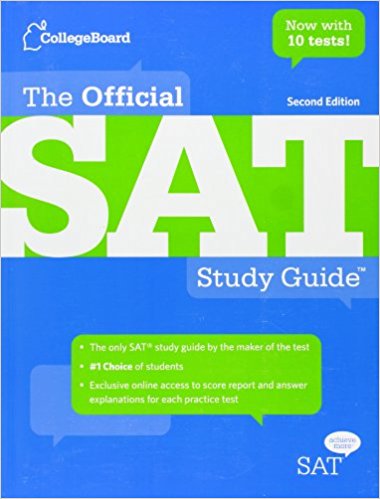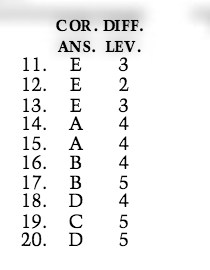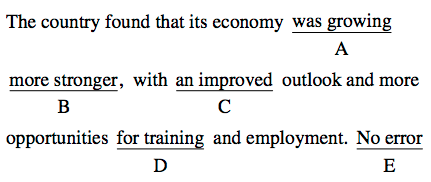1. The pre-2015 Official SAT Study Guide (the old blue book)
 Ah, pre-2015. That was when the SAT was out of 2400, the reading section contained sentence completions, and a calculator was allowed on all math sections.
Ah, pre-2015. That was when the SAT was out of 2400, the reading section contained sentence completions, and a calculator was allowed on all math sections.
Instead of The Official SAT Study Guide we have now, students back then had this blue book, which you can still buy used on amazon quite cheaply.
What most students don't know is that this resource is a goldmine for practice, especially for those seeking tough questions to drill on.
Here are the most effective ways of using the old blue book to study for the current SAT:
- For reading comprehension practice, just jump to the passages of any reading section. The passages are comparable to those on the current SAT, but the questions are harder. If you can get a high score on these reading sections, the ones on the current SAT will be a breeze.
-
Vocabulary is a very important component of the current SAT. If you don't know the words, you won't understand the passage. Fortunately, the old SAT offers a great way to improve your vocabulary—sentence completions. Here's an example:
 Drill on these and review any words you don't know. There will be plenty.
Drill on these and review any words you don't know. There will be plenty.
-
All 10 tests in this book provide difficulty levels for each question, with 1 being the easiest and 5 being the hardest.
 For tough math questions to drill on, go to the answer sheet for any test and make a note of all the math questions that are difficulty level 4 or 5. Now go do those questions from the test and review your work.
For tough math questions to drill on, go to the answer sheet for any test and make a note of all the math questions that are difficulty level 4 or 5. Now go do those questions from the test and review your work.
-
For writing, nearly all the grammar concepts tested on the old exam apply to the current one. It's just that the questions are formatted differently. Here's an example (you have to pick out the grammar error):
 If you struggle with the writing section, I highly recommend doing entire writing sections from this book.
If you struggle with the writing section, I highly recommend doing entire writing sections from this book.
You see, the old SAT was known to be even trickier than the current one. It forced you to be thorough. That's why I recommend doing a lot of these old questions. Even if their format isn't the same as on the current exam, the underlying concepts are the same. The practice will not only improve your awareness but also sharpen your test-taking skills.
Please note that you should only be using this book once you've exhausted all official resources for the current SAT. Obviously, it's better to practice the current format than an older one when possible. This recommendation is for advanced students who want more practice than what's currently out there.
2. The New York Times: College Admissions
Aside from being a great way to prepare long-term for SAT/ACT Reading, The New York Times has tons of articles on college admissions, including examples of amazing college essays and an inside Q&A on how admissions panels operate.
It's a big site but worth exploring; don't be afraid to browse around for articles relevant to you.
3. The Art of Problem Solving
Don't get me wrong—this is a resource for math competitions. They offer high-level training to advanced math students of all ages, all geared towards competitive math.
However, this site is also great for SAT/ACT math training. Here's how I use it:
- Go here for past AMC 8 (American Math Competition) exams.
- Do #1-12 in each exam (difficulty is comparable to SAT/ACT).
- Review your work.
The questions here are great for building up logical thinking and reasoning. I use them for freshman students who are looking for early SAT/ACT prep but aren't quite ready to handle the concepts taught in later years. Giving them actual SAT/ACT exams can be frustrating because they're guaranteed to run into topics they haven't covered.
On the other hand, the AMC 8 is a math competition meant for high-performing 8th graders, which means algebra II and pre-calculus material taught in high school courses won't appear. Instead, the questions are made difficult by the level of thinking required (and yes, the later questions can get very difficult). I find that questions 1-12 are of the right difficulty—challenging enough but not so much that it's beyond the level of thinking required on the SAT/ACT.
4. Youtube
Some of the most useful advice for test prep and college admissions comes from students who have already gone through what you're going through and have described their experiences online.
Check out this post to see some examples of student vloggers who share their wisdom after getting into their dream schools.
